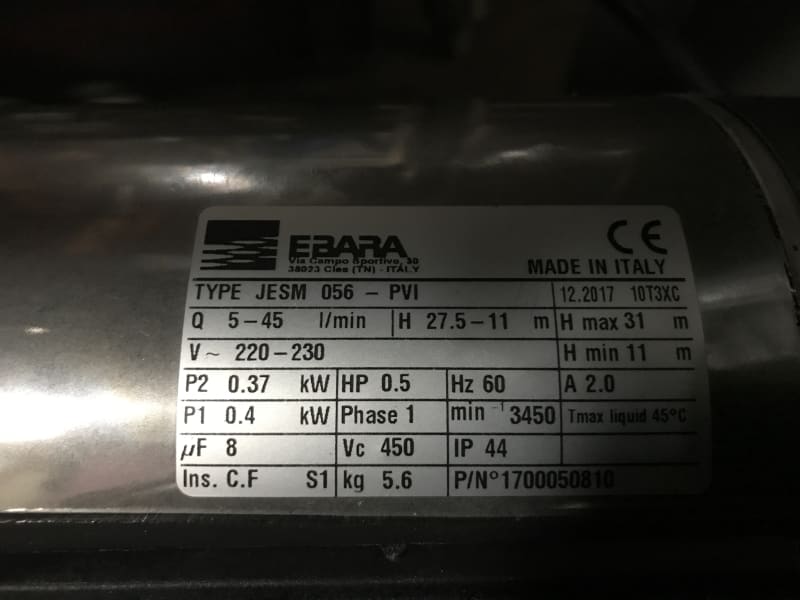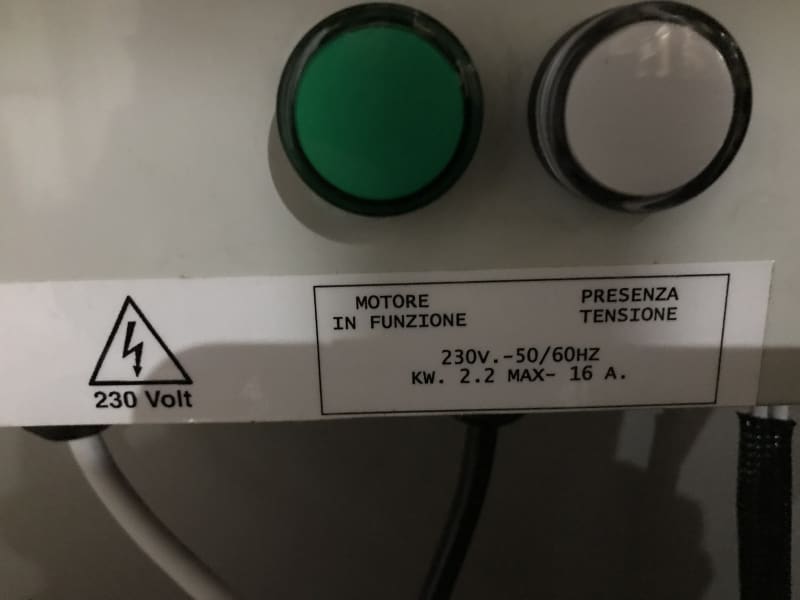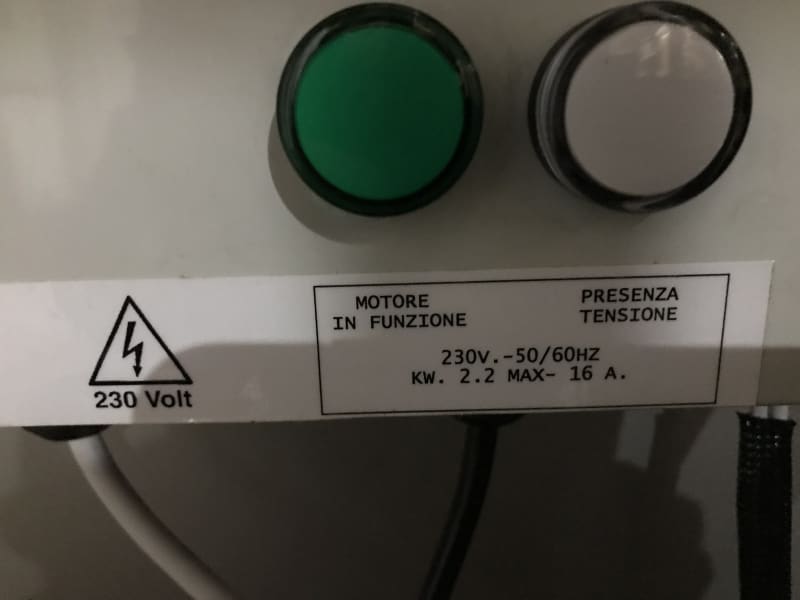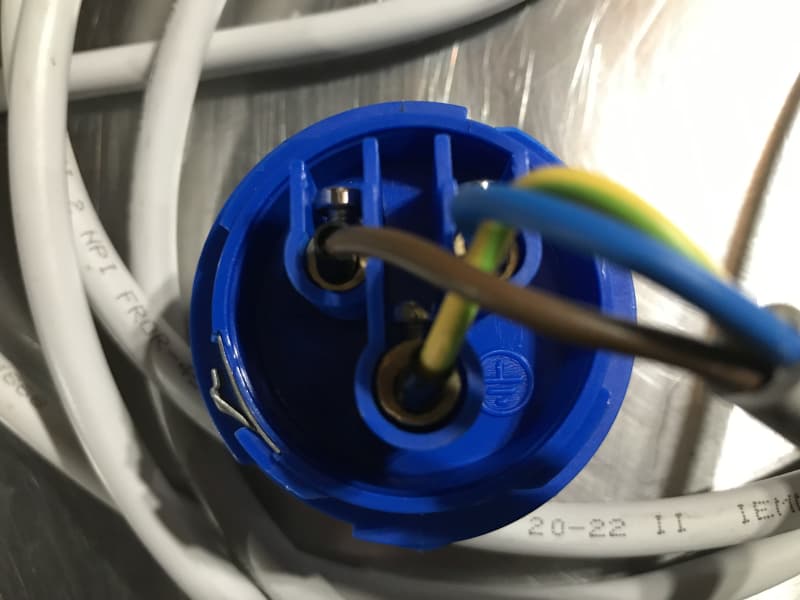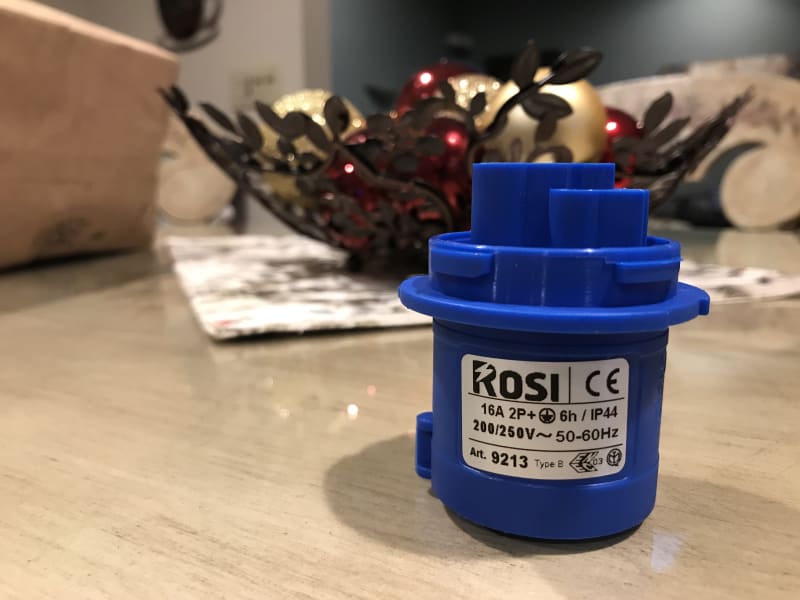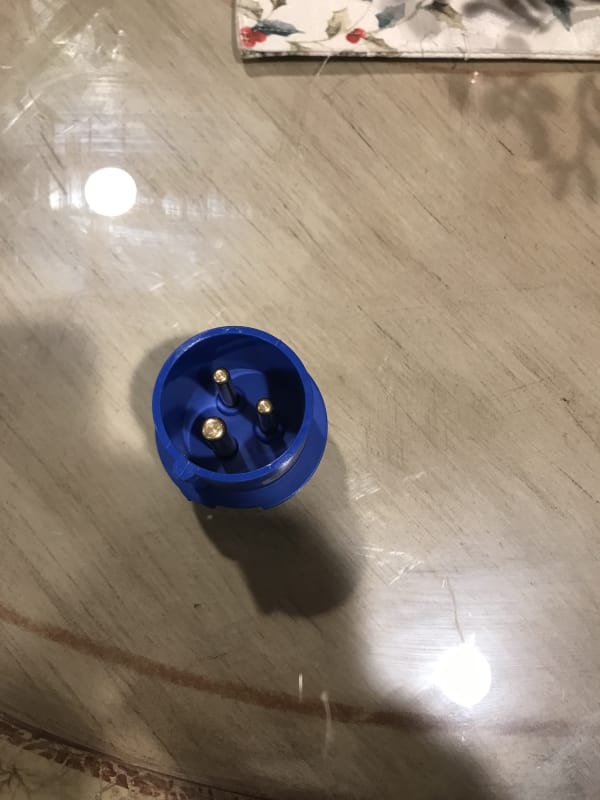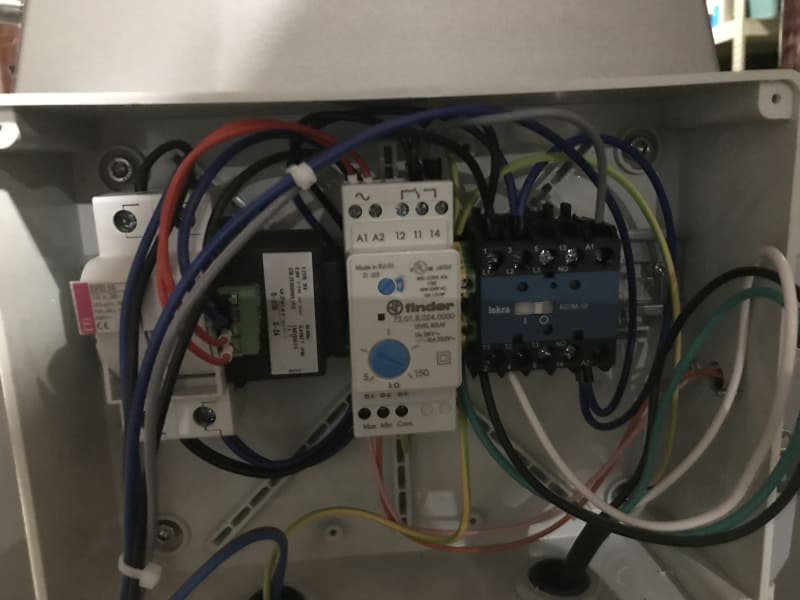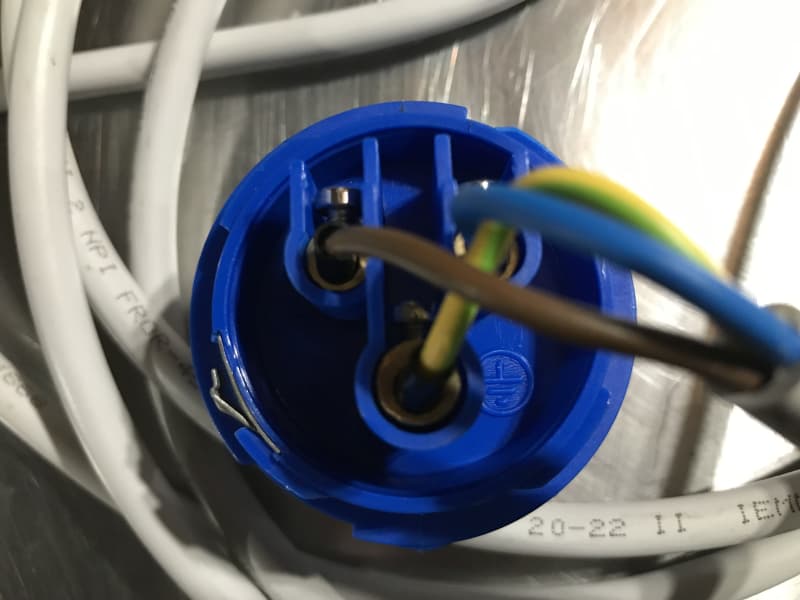Navigation
Install the app
How to install the app on iOS
Follow along with the video below to see how to install our site as a web app on your home screen.
Note: This feature may not be available in some browsers.
More options
Style variation
-
Congratulations MintJulep on being selected by the Eng-Tips community for having the most helpful posts in the forums last week. Way to Go!
You are using an out of date browser. It may not display this or other websites correctly.
You should upgrade or use an alternative browser.
You should upgrade or use an alternative browser.
wine bottle filler Zambelli Filler Tivoli
- Thread starter Nick S
- Start date
- Status
- Not open for further replies.
Skogsgurra
Electrical
The 60 MHz part is definitely wrong. Should be 60 Hz.
If it says 230 V 60 Hz, then 240 V is just right. Within the +/-5% tolerance that European motorized devices can run at.
If no motor - or with a VFD - then the tolerance is +/-10%, which makes it even better suited for a 240 V 60 Hz grid.
So, just plug it in and start bottling!
Gunnar Englund
--------------------------------------
Half full - Half empty? I don't mind. It's what in it that counts.
If it says 230 V 60 Hz, then 240 V is just right. Within the +/-5% tolerance that European motorized devices can run at.
If no motor - or with a VFD - then the tolerance is +/-10%, which makes it even better suited for a 240 V 60 Hz grid.
So, just plug it in and start bottling!
Gunnar Englund
--------------------------------------
Half full - Half empty? I don't mind. It's what in it that counts.
- Thread starter
- #3
- Thread starter
- #4
- Thread starter
- #5
Skogsgurra
Electrical
OK, it says 220-230 V. The capacitor withstands 450 V. And frequency is stated at 60 Hz.
Consumption is 2 A and max fuse should be 16 A. But fuse is only for the wiring (not to protect the machine as such) so I see no problems if you have a 25 A circuit or other.
If you still feel some uncertainty, it is a simple matter to add the secondary of a small transformer, say 50 VA, in series with the live and get down to 220-230 V. Make sure that the secondary is in anti-phase, else you will get around 250 V, which may be a little too much.
But I would, as said before, not worry and start bottling after I had plugged it in.
Wiring: Yellow/green goes to Protective Ground, Blue goes to Neutral and Brown goes to Live. Talk to your sparky if the plug delivered doesn't fit your sockets.
Gunnar Englund
--------------------------------------
Half full - Half empty? I don't mind. It's what in it that counts.
Consumption is 2 A and max fuse should be 16 A. But fuse is only for the wiring (not to protect the machine as such) so I see no problems if you have a 25 A circuit or other.
If you still feel some uncertainty, it is a simple matter to add the secondary of a small transformer, say 50 VA, in series with the live and get down to 220-230 V. Make sure that the secondary is in anti-phase, else you will get around 250 V, which may be a little too much.
But I would, as said before, not worry and start bottling after I had plugged it in.
Wiring: Yellow/green goes to Protective Ground, Blue goes to Neutral and Brown goes to Live. Talk to your sparky if the plug delivered doesn't fit your sockets.
Gunnar Englund
--------------------------------------
Half full - Half empty? I don't mind. It's what in it that counts.
In the USA that would typically be plugged into a 20A circuit.
In the USA there is 120V AND 240V typically available but in new construction it is now 120V and 208V that is available. If you have 208V I suspect that would be too low and you should get a boost transformer and boost your 208V up 24V (a standard boost).
Keith Cress
kcress -
In the USA there is 120V AND 240V typically available but in new construction it is now 120V and 208V that is available. If you have 208V I suspect that would be too low and you should get a boost transformer and boost your 208V up 24V (a standard boost).
Keith Cress
kcress -
- Thread starter
- #8
Skogsgurra
Electrical
Check what the voltage on lamps or appliances is. Best way if you so not measure with a voltmeter.
Gunnar Englund
--------------------------------------
Half full - Half empty? I don't mind. It's what in it that counts.
Gunnar Englund
--------------------------------------
Half full - Half empty? I don't mind. It's what in it that counts.
- Moderator
- #10
North American standard voltages:
Supply: Multiples of 120 Volts: 120V, 240V, 480V (600V Cdn) and additionally for three phase systems: 208V and 277V (347V Cdn)
Standard motor voltages: Multiples od 115 Volts: 115V 230V 460V and (Cdn 575V) And additionally for three phase systems: 200-230 Volts and 208-230 volts.
208 Volt depends on the size of the building, not the age.
Homes and small business will have 120/240 Volts.
Any building or mall with a three phase supply will have 120/208 Volts.
Do not connect to the neutral wire in North America. That will give you 120 Volts.
You must connect to L1 and L2, both hot.
You had best hire an electrician to install a 240 Volt receptacle.
Thinking outside the box:
If this is for occasional use and you have either/or an electric range or an electric clothes drier, either one will have a suitable 240 Volt receptacle.
If you have a 120/208 Volt service then it would be best to install a boost transformer.
Bill
--------------------
"Why not the best?"
Jimmy Carter
Supply: Multiples of 120 Volts: 120V, 240V, 480V (600V Cdn) and additionally for three phase systems: 208V and 277V (347V Cdn)
Standard motor voltages: Multiples od 115 Volts: 115V 230V 460V and (Cdn 575V) And additionally for three phase systems: 200-230 Volts and 208-230 volts.
208 Volt depends on the size of the building, not the age.
Homes and small business will have 120/240 Volts.
Any building or mall with a three phase supply will have 120/208 Volts.
Do not connect to the neutral wire in North America. That will give you 120 Volts.
You must connect to L1 and L2, both hot.
You had best hire an electrician to install a 240 Volt receptacle.
Thinking outside the box:
If this is for occasional use and you have either/or an electric range or an electric clothes drier, either one will have a suitable 240 Volt receptacle.
If you have a 120/208 Volt service then it would be best to install a boost transformer.
Bill
--------------------
"Why not the best?"
Jimmy Carter
Nick; I don't see anything on your pictures that leads me to believe it's a 120V machine. The motor does not even offer 120V as a connection change.
Keith Cress
kcress -
Keith Cress
kcress -
BrianPetersen
Mechanical
Something tells me that the original poster is not actually in North America although he plans to be using it in North America.
It is quite apparent from the nameplate that this is a single-phase device. Now, look at the plug that is meant to be plugged into a wall socket.
If everything has been built according to code, then it will not be possible to plug the device into a wrong voltage. North American electrical plugs found in household appliances are standardised (but quite different from european plugs) and look like this:

As you can see, due to the differing pin orientations, it is neither possible to plug a 120V appliance into a 240V socket nor the other way 'round.
Normal household electrical outlets in North American residential construction are 120V single phase, with 240V single phase outlets provided at selected locations for high-powered appliances, generally in the kitchen for an electric stove and in a laundry room for a clothes dryer.
Commercial buildings will use the same voltages and plugs for the single-phase loads as household circuits use, so if the building and the equipment have been built according to code, it will still not be possible to plug it into the wrong voltage ... unless, of course, one does something stupid such as plug it in through a "plug adapter" that doesn't take care of the voltage.
It is quite apparent from the nameplate that this is a single-phase device. Now, look at the plug that is meant to be plugged into a wall socket.
If everything has been built according to code, then it will not be possible to plug the device into a wrong voltage. North American electrical plugs found in household appliances are standardised (but quite different from european plugs) and look like this:

As you can see, due to the differing pin orientations, it is neither possible to plug a 120V appliance into a 240V socket nor the other way 'round.
Normal household electrical outlets in North American residential construction are 120V single phase, with 240V single phase outlets provided at selected locations for high-powered appliances, generally in the kitchen for an electric stove and in a laundry room for a clothes dryer.
Commercial buildings will use the same voltages and plugs for the single-phase loads as household circuits use, so if the building and the equipment have been built according to code, it will still not be possible to plug it into the wrong voltage ... unless, of course, one does something stupid such as plug it in through a "plug adapter" that doesn't take care of the voltage.
- Thread starter
- #13
- Thread starter
- #14
- Thread starter
- #15
Skogsgurra
Electrical
This is one of the simplest tasks ever. Still, it is going completely out of your hands.
The "crazy" Italian plug is THE standard European plug for one phase/230 V/16A. Used from Sicily to North Cape.
The bottler consumes just 2 A. So you don't have to worry about that part.
Let a competent electrician do the job. We cannot advice you if you do not understand what we are saying.
Gunnar Englund
--------------------------------------
Half full - Half empty? I don't mind. It's what in it that counts.
The "crazy" Italian plug is THE standard European plug for one phase/230 V/16A. Used from Sicily to North Cape.
The bottler consumes just 2 A. So you don't have to worry about that part.
Let a competent electrician do the job. We cannot advice you if you do not understand what we are saying.
Gunnar Englund
--------------------------------------
Half full - Half empty? I don't mind. It's what in it that counts.
- Moderator
- #17
Hi Keith;
Where are you seeing 120/208 Volt residential services?
I'm not doubting you, but I have not seen this yet.
Is this for new subdivisions with underground services?
I do see 120/208 Volts a lot in larger apartment buildings.
I have seen references to "network" underground ,istribution in large cities, in old text books.
This was often 120/208 Volts. according to my reading.
Bill
--------------------
"Why not the best?"
Jimmy Carter
Where are you seeing 120/208 Volt residential services?
I'm not doubting you, but I have not seen this yet.
Is this for new subdivisions with underground services?
I do see 120/208 Volts a lot in larger apartment buildings.
I have seen references to "network" underground ,istribution in large cities, in old text books.
This was often 120/208 Volts. according to my reading.
Bill
--------------------
"Why not the best?"
Jimmy Carter
Hi Bill. Yes, all new multifamily dwellings are usually 208 now, apartments, condos, and townhouses. If you build a new house anywhere near new commercial buildings you'll also end up with 208.
More amazingly, I'm seeing quite a bit of 208 in new only housing areas. I recently took a round trip to N.E. Washington state and marveled to my son how many poles had three identical pole pigs on them. They were EVERYWHERE. Any new house hookups in those areas are typically 208V. Some areas, like apparently the Denver area, have lots of residential 208.
Most SFamily homes are still 240 and if you add a house in the midst of that it will be too, but new residential tracts with underground utilities can end up with ground mounted 3ph transformers star'ing out into the neighborhood.
Count me out.. yuck.
Keith Cress
kcress -
More amazingly, I'm seeing quite a bit of 208 in new only housing areas. I recently took a round trip to N.E. Washington state and marveled to my son how many poles had three identical pole pigs on them. They were EVERYWHERE. Any new house hookups in those areas are typically 208V. Some areas, like apparently the Denver area, have lots of residential 208.
Most SFamily homes are still 240 and if you add a house in the midst of that it will be too, but new residential tracts with underground utilities can end up with ground mounted 3ph transformers star'ing out into the neighborhood.
Count me out.. yuck.
Keith Cress
kcress -
Skogsgurra
Electrical
Correction to my recent post
It may not be the simplest task. Given Bill's and Keith's differing opinions.
My advice is still: Get a qualified electrician to do the job.
Gunnar Englund
--------------------------------------
Half full - Half empty? I don't mind. It's what in it that counts.
It may not be the simplest task. Given Bill's and Keith's differing opinions.
My advice is still: Get a qualified electrician to do the job.
Gunnar Englund
--------------------------------------
Half full - Half empty? I don't mind. It's what in it that counts.
- Moderator
- #20
Hi Gunnar. I would change one word in your recent post;
"Opinion" should be "experience".
We are pretty much in agreement, but Keith sees a much higher population density than do I.
(My nearest neighbours are all more than a mile away.)
That does not in any way detract from your excellent advice.
Running a 220-240 Volt rated motor on 208 will seldom lead to rapid burnout, but it may lead to a slow early death.
And, depending on how heavily the motor is loaded it may work fine indefinitely.
Checking the motor current draw when the unit is pumping will give you a good indication. If the current under load is below the rated current the motor will probably last indefinitely on 208 Volts.
Bill
--------------------
"Why not the best?"
Jimmy Carter
"Opinion" should be "experience".
We are pretty much in agreement, but Keith sees a much higher population density than do I.
(My nearest neighbours are all more than a mile away.)
That does not in any way detract from your excellent advice.
Or at least a voltmeter.Gunnar said:Get a qualified electrician to do the job.
Running a 220-240 Volt rated motor on 208 will seldom lead to rapid burnout, but it may lead to a slow early death.
And, depending on how heavily the motor is loaded it may work fine indefinitely.
Checking the motor current draw when the unit is pumping will give you a good indication. If the current under load is below the rated current the motor will probably last indefinitely on 208 Volts.
Bill
--------------------
"Why not the best?"
Jimmy Carter
- Status
- Not open for further replies.
Similar threads
- Replies
- 3
- Views
- 206

